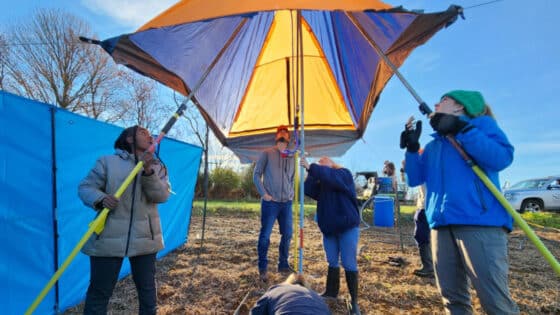Dow, C.L., and R.A. Zampella. 2000. Environmental Management 26(4):437–445.
Abstract
We used linear regression to independently and jointly relate specific conductance and pH measured at New Jersey Pinelands stream sites to the percentage of altered land in a watershed. Percentage altered land included developed and agricultural land uses and represented watershed disturbance for a given site. Median values calculated for a 2-year period (September 1992 through August 1994) characterized pH and specific conductance at the study sites. We found the relationships between the median values for both water-quality measures and percentage altered land for a site to be consistent across subregion and dominant altered-land use. Our results also demonstrated that the water-quality/altered-land relationships developed using median values were similar to relationships developed using data from any single-sample period within the entire study period. Individually, pH and specific conductance explained 48% and 56%, respectively, of the variability in watershed disturbance among study sites. The joint use of pH and specific conductance explained 79% of the watershed disturbance variability among sites. The joint use of these easily obtained water-quality measures can provide a quick assessment of instream water-quality impacts from upstream watershed disturbance at any Pinelands stream site. Additionally, a range in pH and specific conductance, and hence a range in ambient water quality, can be predicted for a given altered-land percentage or a change in existing altered-land conditions.


